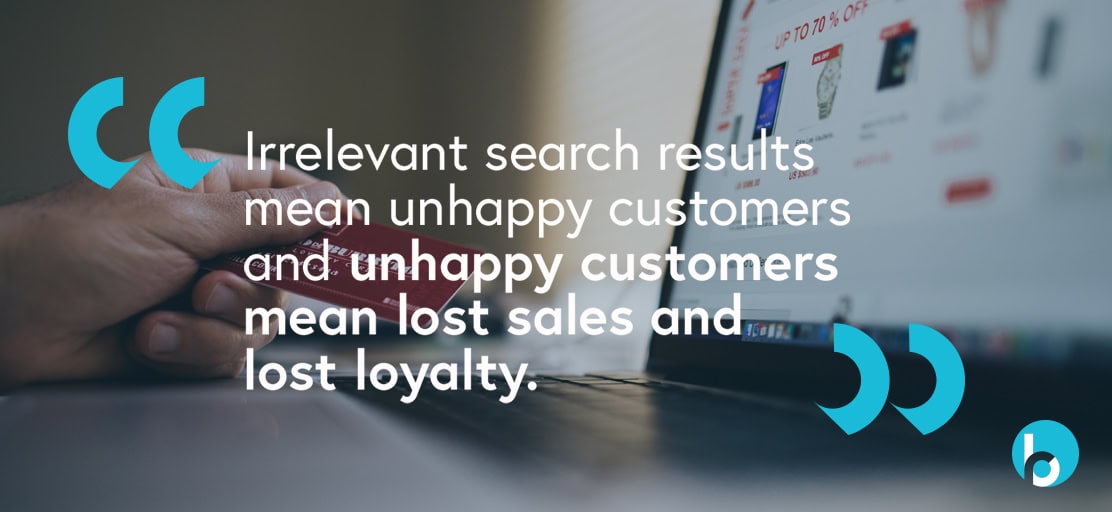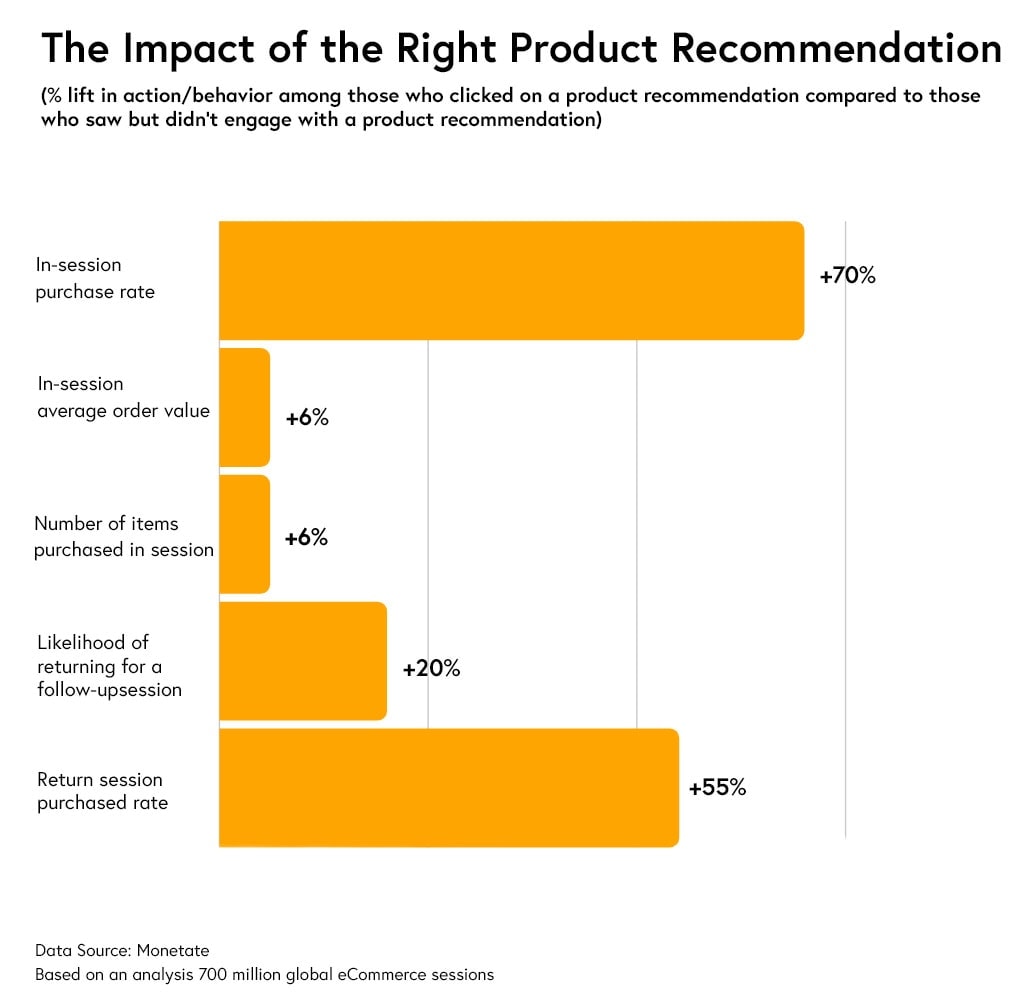Over the past few years, public perception of Artificial Intelligence has split into two camps: on the one hand you’ve got AI’s flag-bearers – those who think it’ll shape humanity for the next hundreds of years.
They see it as an unstoppable force that, although not flawless, will make life easy by optimizing pretty much every way we interact with the world.
On the other hand there’s the people who just don’t trust AI. They say machines will end up turning into hyper-intelligent, runaway robots that will enslave humanity.
These commentators will perceive any advances in AI as a threat and will be far from first adopters.
Regardless of which side of the argument you stand on, the truth it this: AI is growing exponentially, with spending on Artificial Intelligence in eCommerce set to reach $7.3 billion per year by 2022.
We think the best way forward for Artificial Intelligence in eCommerce is to embrace it.
But at the same time, we should combine AI and human insights – that way we’ll have the number crunching power of AI on the one hand, and the subtle touch of the human mind on the other.
But how can we do this? Read on for our comprehensive list.
Optimize Search for Humans
Robots and humans search in very different ways. And yet, a big part of the online shopping experience is optimized for robots.
This is rapidly changing, however, with Artificial Intelligence in eCommerce improving the experience for human shoppers.
How do we optimize a search process for humans?
First off, think of an old-fashioned bakery. As a traditional retailer, it offers a fairly high level of personalization based purely on human interaction.
The shop assistant or baker will give you product suggestions based on the conversation you’re having and will complete the sales transaction.
This process is in tune with how humans behave naturally – essentially making the buying process part of a normal conversation. Online you typically don’t have this kind of interaction.
That means you need to work harder to replicate those friendly suggestions from the shopkeeper.
At the same time, eCommerce creates new opportunities for shopping to become a more personalized experience than you might expect in a traditional shop.
To do so, you need site search that relies on artificial intelligence and natural language processing to constantly learn from user behavior — because users’ behavior constantly changes.
It allows human intervention when desired, but in the meantime, it automatically offers relevant and personalized results to the customers that an enterprise has worked so hard to attract.
Personalize the Shopping Journey
Let’s take a moment to think about how most people shop offline (and what that digital equivalent is).
Take a grocery store for instance, some shoppers know exactly what they want and go directly to the right aisle (faceted navigation).
Some wander up and down the aisles, seeing what items catch their eye this time (creative merchandising). Other shoppers go directly to the attendant and ask for help (site search).While in a physical store, with a few hundred shoppers per day and a limited number of products, a human staff can handle the needs of all visitors.
Online stores, with thousands of daily shoppers and even more products, need some additional help guiding their customers to the products they need.
AI enables personalization at scale, so customers find what they need quicker, are more satisfied with the experience, and businesses see a higher conversion rate.
Without any personalization, shoppers have to navigate a digital warehouse of thousands of products without knowing where to start, and retailers have to make blanket decisions for every shopper – even though we know no one has the same shopping list.
A lack of personalization leads to suboptimal outcomes for both the customer and the retailer:
- Customers can’t find the products they really want.
- Customers buy products that don’t fit their needs as closely as they should and go for the ‘next best thing’.
- Customers end up not buying at all.
- Retailers have the time to only manually curate a few categories, leaving many products buried.
- Retailers leave money on the table by not showing relevant products – even when they have them.
A person’s buying journey isn’t simply about running through a list of requirements and matching these to a product.
Less tangible things need to be taken into account, like tastes, trends and people’s never-ending search for novelty.
This is where the strength of combining a human touch with Artificial Intelligence in eCommerce comes into play.
Give Relevant Product Recommendations to Customers
Let’s have a look at an example of collaboration between human and machine.
One of the most impactful applications of Artificial Intelligence in eCommerce is bury and boost.
The basic idea behind it is that you show your customers products with certain characteristics – the products they’re likely to want to buy. At the same time, you hide products they’re less likely to be interested in.
But, how do you know which products should be boosted and which should be buried? How do you set the rules?
That’s where AI comes in to help. AI will constantly analyze all behavior from visitors – how they reach your website, where they click, what they buy, etc…
It will consider the individual visitor, but will also take into account the wisdom of the crowd that it’s learned from all visitors.
This way it creates an in-depth picture of what an individual visitor is likely to be most interested in.
Take the example of Halfords. They optimized their site search using AI. Every time someone visits the website, the AI starts analyzing their behavior and predicts what they might want to buy.
What does this mean for bury and boost?
Take a visitor who has been looking for bikes and bike accessories. If this person searches the keyword ‘tires’ next, the system will boost bike tires and bury car tires.
That way, the system adjusts to human behavior and not the other way around.
Keep the Human Touch
As clever as AI is, it’s not in touch with the markets you serve in the same way you are.
Say a bike manufacturer decides to launch a new model bike. They’ll probably announce when they’re going to launch it and will make sure to promote it to the public as much as possible.
This is a real-world development AI is unlikely to catch, because it can’t know about products that don’t exist yet.
This is an opportunity for Halfords to go into the system and tell it to boost searches for these particular bikes, right as they’ve been launched.
To further refine the search, they can boost searches for those visitors who are likely to be interested in bikes of a certain type, price range, etc…
AI will take it from there and will further refine search based on past and future visitors.
Result: Artificial Intelligence in eCommerce Leads to Converting Experiences
By combining AI and human insights, your customers will have a more personalized experience. They’ll find searching for products easier and it’s likely their spend per visit increases.
Using Artificial Intelligence in eCommerce is a gradual process.
You don’t need to become a fully AI-enhanced company overnight. At the same time, you’ll want to make sure any personalization you do add to your user experience is part of a broader strategy.
This way, you won’t have different teams working on separate personalization tools without knowing about each other’s efforts.
Personalization runs on data, and the more areas of your experience share and contribute to that data the better your personalization becomes.
Not to mention that aligning efforts across departments means that you’ll be able to create a smoother experience for your customers and fewer headaches for your tech teams.
Even if you just start out with one or two modest changes to your site, you’ll be able to make full use of powerful personalization down the line, increasing sales and making your customers happy!















